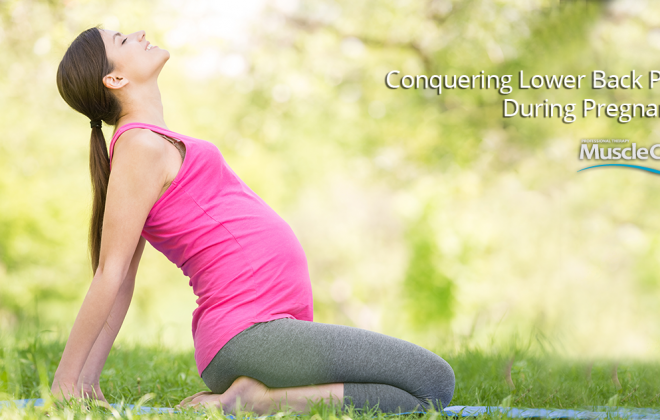Tired Of Working Out When Sore?
 If you ever wonder why your muscles are aching one or two days after you work out or perform any other physically demanding activities, you are likely experiencing delayed onset muscle soreness (DOMS) or its colloquial name “muscle fever”. If you think that what you’re experiencing isn’t normal, then you will be relieved to find that it is very common and that it can be prevented.
If you ever wonder why your muscles are aching one or two days after you work out or perform any other physically demanding activities, you are likely experiencing delayed onset muscle soreness (DOMS) or its colloquial name “muscle fever”. If you think that what you’re experiencing isn’t normal, then you will be relieved to find that it is very common and that it can be prevented.
WHAT’S HAPPENING TO MY MUSCLES?
DOMS will occur after your body performs any physical stress working the muscles in ways they are not otherwise used to. It occurs when the muscle is performing an eccentric or a lengthening contraction leading to smaller microscopic tears or microtraumas in the muscle tissue. The inflammation caused by the damage is what ends up leading the soreness and pain. The end result is a typical gradual increase in discomfort that occurs roughly between a day to two days after intense muscular activity.
SHOULD I BE CONCERNED WITH DOMS?
 The pain involved with DOMS depends on how far each person pushes their body beyond its regular limit. The pain is very common and usually doesn’t amount to anything more than discomfort for a day or two. That being said, while the aches and pains should be minor and can last up to 48 hours, if the aches persist well beyond that then you should seek medical attention or an experienced chiropractor. In addition, if you are experiencing sharp pain during or after your workout, you should contact a chiropractor immediately.
The pain involved with DOMS depends on how far each person pushes their body beyond its regular limit. The pain is very common and usually doesn’t amount to anything more than discomfort for a day or two. That being said, while the aches and pains should be minor and can last up to 48 hours, if the aches persist well beyond that then you should seek medical attention or an experienced chiropractor. In addition, if you are experiencing sharp pain during or after your workout, you should contact a chiropractor immediately.
HOW TO AVOID DOMS AND FURTHER WORKOUT INJURIES
During workouts or strenuous activity many people will say things such as “I’m going to feel that tomorrow.” Unfortunately for many this can become a deterrent to working out when sore. When you know how to workout properly, you will begin to release the endorphins enjoy the benefits of getting a workout again. Using proper stretching exercises and taking certain work out precaution will go a long way to preventing DOMS from getting the best of you.
Unlike DOMS, acute muscle soreness is felt as soon as a minute after the initial muscle contraction. These muscle pains are due largely in part to improper work out methods that don’t involve good posture, patience and smarts. When you workout improperly by doing too many reps too fast, the most common areas you will injure are your neck, shoulders, knee, foot, ankle and lower back.
Every set of weights and work out machine in your gym should have an outline of the proper way of using that machine. If you feel you are in a position where you are “yanking” or “pulling”, you are likely using the equipment improperly. Muscle strains and pulls are more likely to occur than DOMS and take a lot longer to recover from. Make sure to properly read the instructions on the machine or seek out a trainer at your gym in order to get both an effective and safe work out.
Preventing Injury When Lifting Heavy Weights
 Whether you are lifting weights or lifting any objects that your body is otherwise not used to lifting try to keep the following advice in mind. This advice also applies to any other situations where you may be lifting and moving other everyday objects.
Whether you are lifting weights or lifting any objects that your body is otherwise not used to lifting try to keep the following advice in mind. This advice also applies to any other situations where you may be lifting and moving other everyday objects.
- Make sure to bend at the knees and hips, not at the waist.
- Keep your shoulders above your hips and look forward with your head in the upright position. This will help maintain your spinal curve.
- Only lift with the legs and buttocks – not the back.
- Make sure you are always breathing. Refrain from holding your breath.
- Lift slowly – Going too fast won’t help and it can be dangerous
- Do not twist as you lift.
- Move your feet instead of twisting your upper body when you stand or turn.
- Avoid overhead lifts. Use a stool, ladder, and a friend.
- Use mechanical devices or get help if the object is too heavy.
- Always have a spotter and think before you lift.
If your body isn’t accustomed to handle a rigorous workout then we suggest to avoid, back squats over 10% of your body weight, deadlifts , overhead press. front pull ups, and instead of heavy bench we suggest doing fly’s. When you lift highly above what your body considers to be normal, you are only subjecting yourself to further muscle strain, discomfort, and potential injury.
HOW TO STRETCH BEFORE AND AFTER WORKOUTS
Before and after you work out it’s always very important to stretch properly. Stretching could help limit the amount of discomfort experienced after your workout. Here are six rules to stretching successfully.
- Warm up by walking on the spot for 1-5 minutes.
- Hold each stretch for one repetition for around 30 seconds.
- Hold stretch in a comfortable position and try not to bounce.
- Be as gentle as you can with the stretches – don’t over do it.
- Breathe deeply.
- Stretch both sides equally.

For a more stretching tips, refer to the this list of both bending and lifting stretches to handle any other types of activities.
EFFECTIVE SORE MUSCLE PAIN RELIEF FOR WORKOUTS

One thing you should make sure to include in your gym bag is the scientifically proven method of sore muscles is using MuscleCare and its topical pain relief formula. It’s all natural formula means it’s safe to use and its doctor developed and tested formula provide effective sore muscle pain relief as well as any other muscle and joint pain that comes with working out. In combination with chiropractic treatments and chiropractic approved stretches, MuscleCare is proven to make a giant difference in regard to the soreness after working out. In essence, using MuscleCare will prevent you from ever “feeling it the next day.”

JAMAAL CHARLES
NFL FOOTBALL RUNNING BACK
Whether in the locker room, home, or when I’m traveling on the road, MuscleCare really helps me get rid of those every day aches and pains I get from being knocked around on the field all day. The Roll-On is great for on the go, and the Extra Strength cream is awesome after a long hard day of practice. It’s great that there is finally a product out there that can effectively combat muscle pain.


